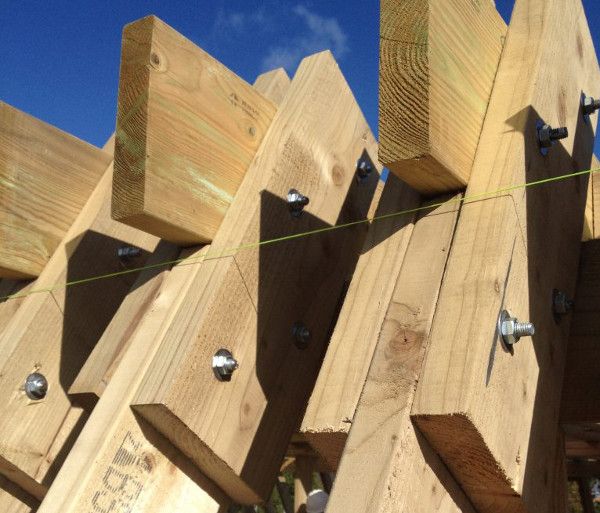Do I need a party wall agreement? Maybe not…

Hiring a highly professional construction company can be beneficial in many ways. In houseUP we have a unique approach: our construction managers are also structural engineers with several years of construction site experience.
Many times we saw how houseUP approach prevented issues and saved costs for our clients, when at first sight a solution seemed impossible.
Who would think that a structural engineer can avoid a party wall dispute with neighbours?
The project: adding a storey to a five-storey terraced building
Our clients acquired a five storey terraced building, with blocks of flats on both sides of the building. The development plan included internal layout re-configuration, creation of additional space at the rear of the building and a loft conversion. At the end of the project, our client was going to rent out the 6 completed flats.
The work included the removal of structural walls and the creation of a new suspended timber floors. Those alterations required the installation of steel beams, usually placed on the party walls. Party walls are the easiest option and most commonly implemented because they don’t have openings, like doors or windows, as they separate adjacent buildings. The absence of any opening makes it very simple to design the placement of the beams and define the load distribution configuration.
The challenge: a party wall procedure involving 12 parties
According to the Party Wall Act, we had to reach an agreement with all the freeholders and leaseholders from adjoining flats. In this project, we had several independent adjoining flats that required 12 party wall agreements.
What is the Party Wall Act
According to the party wall act, you need to agree with each and all your adjoining neighbours when planning building work involving alterations to walls astride a boundary. In case you cannot reach an agreement in 14 days, you and your neighbours will appoint party wall surveyors to reach an agreement.
You can learn everything you need to know on party wall agreements from our post here.
What’s the impact of a party wall agreement with 12 parties
When negotiating a party wall agreement, every party has the right to appoint their own party wall surveyor. Plus, the time factor can significantly impact the project plan, delaying the start of the construction work.
When our clients engaged us, they hadn’t even started the party wall procedure. In this project, complications were very likely to occur because of the large number of involved parties.
Even if all the parties granted their consent straight away, the procedure would cost at least £ 10k if they chose to involve party wall surveyors to draft the agreement; plus, a delay of two months at the least would mean a loss of income from the renting of about £ 18k.
In the worst case scenario, signing off the party wall agreement could take several months of delay and huge expenses, if the neighbours are not in agreement with the planned work. When solicitors and party wall surveyors are appointed by the involved parties, our clients were likely to have to cover for all the costs.
In our clients’ assessment, the party wall procedure was forecast to cause a delay of 6 months and a loss of income of £ 50k plus the additional expenses.
The solution: technical expertise and a unique structural approach
When we were appointed by our client, we decided we wanted to find a way out of the hassle related to the party wall agreements; our engineer took the lead and started to work on an alternative structural design that would shortcut the party wall procedure and leverage technical competence and design creativity instead.
We proposed an alternative design, placing the steel on top of the front and rear external walls. Technically this is more challenging compared to using the party walls, because we could not rely on solid structures with a continuous pattern. Unlike party walls, the front and rear walls are discontinuous structures and the distribution of the load depends on many variables, like window openings and the internal layout of the different floors.
The new structure required to define the correct load path so that the load is distributed correctly along the elements down to the foundations. The new design had the floor beams sitting on the front and rear external walls. The beams had an 8-metre span and were larger than the ones from the original design.
We also made some alterations to the external window and door openings, replacing the existing lintels with steel beams, to distribute the load correctly from the floor beams to the foundations.
The result: faster completion and lower cost
When we proposed the alternative solution to our client, we were able to provide evidence that the new design would result in completing the work more quickly.
Although the new structural design would cause a max of 10% increase of the construction cost, it made the investment much more profitable in a shorter time frame.
Our clients could complete their project following an alternative structural design thanks to our in-house structural engineer, who also led the implementation of a structure that did not impact the party walls.
Legal processes can deeply affect the profitability of a property investment. Having the right professionals on your side can become the most important factor to make a difference between success and failure. Brilliant engineers who understand technical, legal and financial aspects can be the most profitable choice you make when investing in the property market.
Gen is managing director and chief of digital strategy at houseUP. She has a background in information security and product management in tech startups.
houseUP is a construction company in London, specialised in high end residential and commercial projects.

